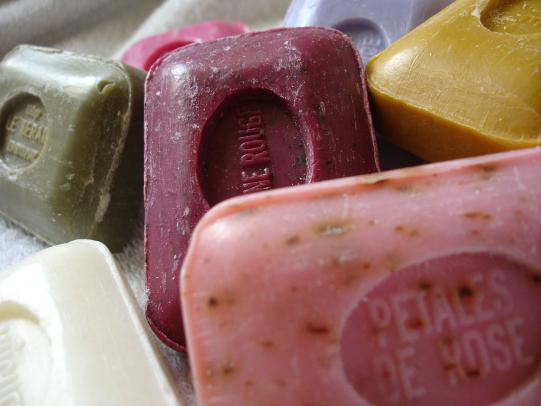
Source of pictures: pixabay.com
It is a good day for playing football in a sunny Sunday. Mackle and Linda were playing football outdoors. "Mackle, dinner is ready!", as he heard mother's voice, he stopped playing and said goodbye to Linda. Then he rushed upstairs for dinner.
"Take off your shoes. Your socks are stink," pointing at his trainers, Mom stood at the door with another hand on her hip.
"OK," he replied. "And you have to learn to wash your socks. I can't do it for you forever," mother continued.
"No problem," he answered quickly. However, he actually mumbled to express his dissatisfaction.
After the dinner, he went to wash the socks with a basin and a bar of soap. The sweat and stains were dissolved by the water in suds. He felt doubtful: were they really washed cleanly? When the socks were dry the next day, they became white and clean again. Why did socks get clean again? Why can soap wash clothes cleanly?
We can't see what happens to clothes when they are rubbed against each other in the suds. In fact, there are magical principles. The ingredient of the soap we usually use is "advanced sodium Aliphatate". This ingredient makes the soap used as a "surfactant". The microstructure of the surfactant is generally composed of two parts. One end prefers to get close to water, so we call it a "hydrophilic group". The other end gets far away from water while it likes oil, so we call it a "hydrophobic group" or "lipophilic group". Advanced sodium Aliphatate is the same as what we just said and its molecule is composed of two parts. The end with the chemical "carboxyl" favors water and is a "hydrophilic group"; the other part with "alkyl" isn’t a fan of water but likes oil and is hydrophobic group.
When the molecule of the soap is in water, its hydrophilic group, i.e. the end with the carboxyl, is more willing to stick to the water molecule. However, the hydrophobic end with the alkyl will stay away from the water and be likely to be combined with the oil molecule. You can imagine the oil molecule as a ball of wool with a lot of needles on it. The part of needles exposed out of the wool ball is the hydrophilic group. As this part likes water, it is exposed to the outside with water. The part inside the wool ball is the hydrophobic group. This part doesn't like water, so it hides inside the wool ball.
If this oily "wool ball" has a lot of needles on it, i.e. there are enough soap molecules, it will be surrounded by these molecules. By means of rubbing and washing with water, the oily ball or stains will break away from its original attachment, disperse into smaller droplets, and then flow away with water. This is the principle for cleaning clothes and socks with the soap. Although other washing powders, soaps, etc. have various ingredients, they have the same principle.
Why not wash your socks by yourself tonight? Imagine what’s happening in the water.
Author: Ya Wen

















 京公网安备11010502039775号
京公网安备11010502039775号





